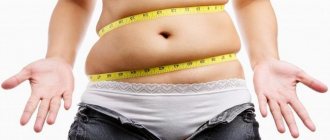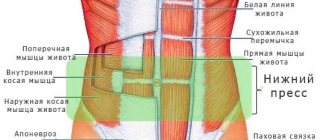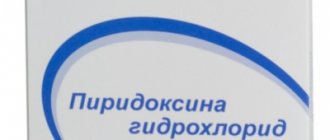The entry is posted in the sections: Proper nutrition Add to favorites
Vitamin D is an incredibly important substance that has a huge impact on many systems in our body. Unlike most vitamins, D works as a hormone, so absolutely every cell in our body has a receptor for it.
When the skin is exposed to the sun, the body converts cholesterol into vitamin D. It can also be found in fatty fish and fortified dairy products, but it is very difficult to get enough from diet alone.
The recommended daily intake is approximately 400-800 IU, but many experts will say that you should get even more.
Vitamin D deficiency is quite common. It is estimated that more than a billion people worldwide have low levels of this substance in their blood.
According to a 2011 study, 41.6% of adults in the United States are deficient. For Hispanics, this figure rises to 69.2%, and for African Americans up to 82.1%.
Here are the main risk factors for a deficiency of this element:
- dry skin;
- elderly age;
- overweight or obesity;
- insufficient consumption of fish or milk;
- living far from the equator, where there is little sunlight throughout the year;
- constant use of sunscreen when walking;
- sitting at home.
People living near the equator receive sufficient amounts of sunlight and therefore are rarely deficient. Their skin creates the optimal amount of vitamin D, satisfying all the body's needs.
Many people do not realize that they are missing this element because the symptoms are quite vague. You can easily overlook these signs, even if the deficiency is already having a powerful negative impact on your quality of life.
The role of vitamin D in the body, causes of deficiency and excess
The main function of calciferol is to ensure the processing of calcium and phosphorus in the small intestine. Another role is participation in the synthesis of hormones, regulation of cell reproduction, and metabolic processes. Some researchers classify calciferol as a hormone.
Due to its properties, the nutrient affects the following systems:
- the immune system is strengthened due to its presence;
- gastrointestinal tract – normalization of intestinal motility, insulin production by the pancreas;
- antitumor activity – suppresses the growth of cancer cells;
- reproductive – increases libido;
- endocrine – regulation of the functioning of the endocrine glands;
- nervous – strengthening myelin sheaths, improving attention and memory;
- circulatory – regulation of blood clotting;
- skin – improves the condition of the skin, hair, nails;
- cardiovascular – regulates blood pressure.
There are two causes of vitamin D deficiency - insufficiency of independent synthesis and lack of vitamin D due to nutritional disorders.
Lack of vitamin D production in the skin occurs due to the following factors:
- dark shades of the skin - the production process is reduced in residents of southern countries, the body protects itself from excess;
- exposure to chemical reagents - sunscreens, lotions, leads to disruption of synthesis;
- industrial emissions, city dust - make it difficult to expose to the sun;
- living in northern territories with low solar activity causes a deficiency in the formation of vitamin D;
- in older people – with age, the skin’s ability to synthesize calciferol decreases.
Vitamin D deficiency develops with eating disorders:
- vegetarian lifestyle - low intake due to the lack of vitamin D in the diet, contained in meat, fish, eggs, which are not consumed;
- consequences of unbalanced diets, therapeutic fasting;
- pregnancy, breastfeeding - vitamin D deficiency causes increased consumption for two people, while only the mother is able to replenish the level; the baby can only receive it through milk or in utero.
Other causes of vitamin D deficiency include:
- decreased physical activity of a person, excess weight;
- disease of the gallbladder, liver, kidneys;
- inflammatory diseases of the small intestine that disrupt the absorption process;
- drug therapy that reduces stomach acidity.
★★★★★
California Gold Nutrition, Vitamin D3, 125 mcg (5000 IU),…
316 ₽
More details
★★★★★
California Gold Nutrition, Vitamin D3 Gummies, Gelatin Free,…
474 ₽
More details
★★★★★
California Gold Nutrition, Vitamin D3, 50 mcg (2000 IU), 90 Fish Gelatin...
316 ₽
More details
Excessive levels of calciferol are caused by the following reasons:
- overdose of medications taken;
- simultaneous intake of synthetic substitutes with the consumption of large amounts of fatty fish and seafood;
- consequences of excess ultraviolet radiation.
An overdose can be determined by the symptoms:
- disruption of the gastrointestinal tract;
- convulsive syndrome;
- pain in muscles and joints;
- weight loss;
- neurological disorders;
- arterial hypertension;
- unquenchable thirst.
An excess is just as dangerous as a deficiency of vitamin D. The required level of daily intake is 10 mcg; children and pregnant women do not have enough of this amount; increased doses are prescribed.
How to Monitor Vitamin D Levels
The 25-OH vitamin D test is the best way to monitor vitamin D. It reflects the amount of the vitamin your skin produces and what you get from food and supplements. Once you receive the test result, you can compare it with the recommended standards and decide whether to take supplements or not. If Vitamin D is normal, you will know that it is worth maintaining your normal lifestyle.
The norm of vitamin D 25-OH is determined by the Russian Association of Endocrinologists. The following indicators are distinguished:
- less than 20 ng/ml - deficiency
- less than 30 ng/ml - insufficiency
- from 30 to 100 ng/ml is an adequate level.
Residents of big cities lack sun at any time of the year.
| Interpretation of 25(OH)D concentrations accepted by the Russian Association of Endocrinologists | ||
| Classification | Blood 25(OH)D level ng/ml (n/mol/l) | Clinical manifestations |
| Severe vitamin D deficiency | <10 ng/ml (<25 n/mol/l) | Increased risk of rickets, osteomalacia, secondary hyperparathyroidism, myopathy, falls and fractures |
| Vitamin D deficiency | <20 ng/ml (<50 n/mol/l) | Increased bone loss, secondary hyperparathyroidism, falls and fractures |
| Vitamin D deficiency | ≥20 and <30 ng/ml (≥50 and <75 nmol/l) | Low risk of bone loss and secondary hyperparathyroidism, neutral effect on falls and fractures |
| Adequate Vitamin D Levels | ≥30 and <30 ng/ml* (≥75 nmol/l) | Optimal suppression of parathyroid hormone and bone loss, reducing falls and fractures by 20% |
| Levels with Possible Vitamin D Toxicity | >150 ng/ml (>375 nmol/l) | Hypercalcemia, hypercalciuria, nephrocalcinosis, calciphylaxis |
Doctors recommend including sources of vitamin D in your diet or taking supplements. Most vitamin D is found in foods such as fatty fish and fish oil. It is also found in beef liver, cheese, egg yolks and some mushrooms.
You should also be in the sun regularly, but remember, it can be harmful due to UV rays.
| Sources of vitamin D in food | |
| Natural food sources | ME vitamin D (D2 or D3) |
| Wild salmon | 600–1000 ME per 100g |
| Farm raised salmon | 100–250 ME per 100g |
| Herring | 294–1676 ME per 100g |
| Som | 500 ME per 100g |
| Canned sardines | 300–600 ME per 100g |
| Canned mackerel | 250 ME per 100g |
| Canned tuna | 236 ME per 100g |
| Fish fat | 400–1000 IU per 1 tablespoon |
| UV irradiated mushrooms | 446 ME per 100g |
| Mushrooms not irradiated with UV | 10–100 IU per 100g |
| Butter | 52 ME per 100g |
| Milk fortified with vitamin d | 2 ME per 100g |
| Sour cream | 80–100 ME per 100g |
| Egg yolk | 52 ME per 100g |
| Cheese | 2 ME per 100g |
| Beef liver | 44 ME per 100g |
Symptoms of vitamin D deficiency in adults
A lack of vitamin D in the body is manifested by symptoms in adults:
- Pain syndrome of the musculoskeletal system. This is a lack of vitamin D in all adults, especially muscle cramps, aching bones. It manifests itself due to a decrease in the processing of minerals - calcium, magnesium, phosphorus. The intensity of pain varies and depends on individual characteristics.
- Fragility of skeletal bones. Deficiency and hypovitaminosis of vitamin D in all adults leads to the development of increased bone fragility. The reason is the pathology of calcium metabolism in the body.
- Susceptibility to acute respiratory viral infections caused by decreased immunity. The upper respiratory tract is especially vulnerable. Infections can lead to complications - bronchitis, pneumonia.
- Arterial hypertension. A person is able to retain sodium salts, the accumulation of which increases blood pressure. Calciferol counteracts this. Lack of vitamin D disrupts osmotic balance.
- Disruption of the gastrointestinal tract. With vitamin deficiency caused by a lack of vitamin D, symptoms are detected - nausea, belching, pain in the epigastric region, bloating, and upset stool.
- Increase in body weight. Vitamin D deficiency is associated with increased fat absorption of calciferol. Losing weight increases nutrient production. To avoid the formation of vitamin deficiency, obese people are recommended to take the drug in a higher dosage.
- Strengthening the work of the sweat glands in the back of the head.
- Failure of sleep and rest mode. Signs of a lack of vitamin D are unstable sleep at night, with repeated waking up, and lack of deep sleep phases. The patient gets up in the morning exhausted. Sluggish during the day, decreased performance.
- A lack of vitamin D leads to neuropsychic problems - depression, mood swings due to impaired serotonin synthesis.
- Malfunctions in the functioning of the cardiovascular system are provoked by a lack of vitamin D; obvious symptoms are pain, increased heart rate, and irregular heart rhythm.
- Severe bleeding gums.
- Hair loss.
A general blood test demonstrates anemia, biochemical blood tests are more informative - low calcium, magnesium, phosphorus, increased alkaline phosphatase.
Features of calciferol deficiency in women
It is easy to find out how a severe lack of vitamin D manifests itself in women. The main problems arise in the emotional sphere - mood swings, depression, aggravated by cosmetic defects of the skin, hair, and nails. Low female vitamin D affects reproductive failure. Lack of the required concentration is a threat to infertility and breast cancer.
Features of calciferol deficiency in men
A lack of vitamin D in men is observed in the physical area. Changes in metabolism, manifested by excess weight gain. Muscle spasms, cramps, and bone aches develop. Lack of vitamin D concentration in men affects reproductive function - testosterone and the qualitative composition of sperm are reduced. A prolonged absence of the required nutrient concentration can lead to infertility. Low testosterone affects libido.
Vitamin D increased: what to do
High levels of vitamin D can lead to anorexia, weight loss, increased urine output, and cardiac arrhythmia. Remember that vitamin D can increase blood calcium levels. This will lead to calcification of blood vessels and tissues. This can cause damage to the heart, blood vessels and kidneys. Therefore, during the period of taking additional vitamin D, we recommend getting tested at least once every 6 months.
It is recommended to check your vitamin D level before starting its correction and after treatment. This will allow you to monitor changes in levels over time and evaluate the effectiveness of treatment. At Lab4U you can take a comprehensive test for vitamin D and calcium deficiency with a 50% discount . You will receive the results by email. They will also be available in your personal account. Now it is very easy to observe the dynamics of changes in the body’s indicator.
According to research by the Russian Association of Endocrinologists, an excess is only possible with an overdose of vitamin D - consumed in doses exceeding those recommended by the attending physician.
Symptoms of vitamin D deficiency in children
A lack of vitamin D in the body in infants causes the development of a terrible disease - rickets. It is possible to determine that a child has vitamin deficiency by the following symptoms:
- slow overgrowth of fontanelles, large fontanel with soft edges;
- swollen joints;
- in a six-month-old child, the ends of the ribs undergo thickening;
- deformation of the bones of the hips and shins in the shape of the letter x;
- delayed physiological growth - slower teething, weight gain, short stature;
- difficulty with age-related development - delayed speech, walking, crawling.
In addition to rachitic symptoms, other signs of a developed vitamin D deficiency appear, which make it possible to understand that a problem has arisen:
- susceptibility to colds and infectious diseases due to weak immunity;
- muscle spasms, problems with respiratory function are caused by low calcium levels;
- kids are irritable and restless;
- increased sweating at the back of the head.
★★★★★
California Gold Nutrition, Children's Vitamin D3 Drops, 400 IU, 10 ml (0.34...
632 ₽
More details
★★★★★
Vitables, Vitamin D3 Chewable for Children, Black Cherry Flavor, 12.5 mcg…
474 ₽
More details
★★★★★
Vitables, Gummy Vitamin D3 for Children, Strawberry Flavor, 60 Vegetarian…
632 ₽
More details
Why you need a comprehensive vitamin D test
Even if you take the Vitamin D25-OH test, you will not see the full picture of the vitamin’s effect on the body. Conversely, if you determine what level of calcium, phosphorus or magnesium you have in your body, you will need to find out the possible reasons for these levels. This will allow you to prescribe the most effective treatment.
Therefore, medical experts of the online laboratory Lab4U have developed a special complex - Examination for vitamin D and calcium deficiency. It will allow you to comprehensively study the effect of vitamin D on phosphorus-calcium metabolism and the body as a whole, as well as prevent possible negative consequences of a lack or excess of vitamin D.
Get tested and bring the results to your doctor. If necessary, he will prescribe treatment for you.
You can take a complex test for vitamin D and calcium deficiency with a 50% discount. The analysis will be ready within 1 day. You will receive the results by email as soon as they are ready.
Consequences of calciferol deficiency
The question of what results from a lack of vitamin D intake is answered taking into account age characteristics.
Consequences of deficiency in adults
A terrible consequence is called osteomalacia. It manifests itself as weakness of the skeletal system, gait disturbance, deformation of the spine and skull bones. Sensitivity is impaired, the patient complains of muscle pain and difficulty moving.
A lack of vitamin D in the body provokes increased sensitivity to infections, the development of cancer, atherosclerosis, infertility, depression, and arterial hypertension.
Consequences of deficiency in children
In children, not only the bone system, but also the neuropsychic system suffers. Developmental delay occurs in all respects. It takes a long time for a child to catch up with his peers. If normal levels of substances are not restored in a timely manner, the developed hypocalcemia threatens the life of the baby - cardiomyopathy and cardiac arrest are possible.
Sources
We can obtain microelement not only from sunlight, but also from a number of products. By the way, irradiation of products with ultraviolet light can increase the content of nutrient D in them. This practice is being actively implemented in the USA, especially in relation to dairy products.
Food can only contain ergocalciferol; its main sources are:
- Fatty fish and fish oil.
- Chicken egg yolk, butter, cheese. These products contain significantly less of it than marine life. For example, to cover 400 IU (international unit), you need to eat 150 grams of salmon or 20 eggs.
- Mushrooms, but only “wild” ones - those that grew under natural light. Chanterelles are considered the richest in nutrients.
We can get the element without natural light, just sunbathe in a solarium. However, this method negatively affects the condition of the skin (photoaging) and increases the risk of developing tumors.
By the way: for fair-skinned people, it is enough to be in the sun for 5 minutes 2 times a week for sufficient vitamin intake, and for people with dark skin – more than 30 minutes. Obesity, wearing closed clothing and the elderly experience vitamin deficiency even with sufficient sun exposure.
What diseases are caused by hypovitaminosis D?
Diseases that arise from a lack of vitamin D are numerous - chronic infections, colds, visual impairment, respiratory failure, coronary heart disease, malignant tumors, tooth loss.
Hypovitaminosis D provokes a disease called hyperparathyroidism. The parathyroid gland, if there is not enough calciferol for a long time, produces an excess amount of hormones that cause fragility of the skeletal system, the formation of kidney stones, urinary incontinence, and disruption of the gastrointestinal tract.
Preventive actions
Clinical recommendations on how to avoid hypovitaminosis are categorical - first of all, exposure to ultraviolet radiation is necessary. You can increase calciferol by sunbathing daily for half an hour. The recommendation applies to white-skinned people. Dark-skinned and older people will need twice as much time to replenish their reserves.
The question arises of how those who live in northern latitudes and regions of the far north can replenish vitamin D reserves in winter, since solar activity is low. You can get the required amount from food products - sea fish, beef liver, eggs, milk, meat.
As a preventative measure, pregnant women and young children are recommended to supplement their diet with dietary supplements. Fish oil and various complexes, including group D, are used.
Daily requirement
The dose size is determined depending on the age and physical condition of the person. The daily consumption rate will be:
- For children and adolescents - from 400 to 600 IU.
- For adults - 400 IU.
- For older people - from 600 to 800 IU.
- For pregnant women - approximately 800 IU.
The easiest way to get calciferol is to take a walk in direct sunlight. Vitamin deficiency is mainly experienced by people who rarely go outside. But there are other categories of the population that suffer from hypovitaminosis and need an additional dose:
- people with dark skin;
- residents of northern latitudes;
- vegetarians;
- residents of industrial cities;
- old men;
- people suffering from serious illnesses.
All categories urgently need additional vitamin D intake. But you should not experiment with the dosage of the microelement on your own. Excessive use of calciferol can lead to irreversible consequences and possibly death. Therefore, if you have questions about the correct dose, you should consult your doctor.
Therapy for hypovitaminosis D
Treatment consists of attempting to restore optimal nutrient concentrations. You can increase the content using injections, tablets, powders, and liquids. If there is a deficiency in vitamin D concentration, the necessary treatment is carried out under the supervision of a doctor. The therapist is able to understand what dosages should be used to treat the pathology. To increase the level of cholecalceferol and ergocalciferol, children are prescribed fish oil capsules.
A doctor from an Israeli hospital explains in this video how to quickly increase vitamin D:
https://www.youtube.com/watch?v=3VpVf1Ok8OE
The use of traditional recipes in therapy
Hypovitaminosis can be treated using traditional methods. There are many recipes, proven over centuries, that can restore poor health.
| Compound | Cooking method |
| Dandelion, cucumber, olive oil | Wash the dandelion leaves, peel the cucumber and cut it. Mix, salt, season. |
| Nettle, green onions, parsley, walnuts, nut butter | Fry the nuts, chop the greens, pour boiling water over them. Mix, salt, season. |
| Alfalfa seeds | Germinate within two days. Use as an additive to dishes. |
| Horsetail | Bring a tablespoon to a boil, leave for twenty minutes, strain. Drink two hundred grams per day. |
| St. John's wort | Pour four tablespoons into half a liter of water and leave for an hour. Take a tablespoon three times a day. |
If anyone knows other interesting recipes, please share them.











